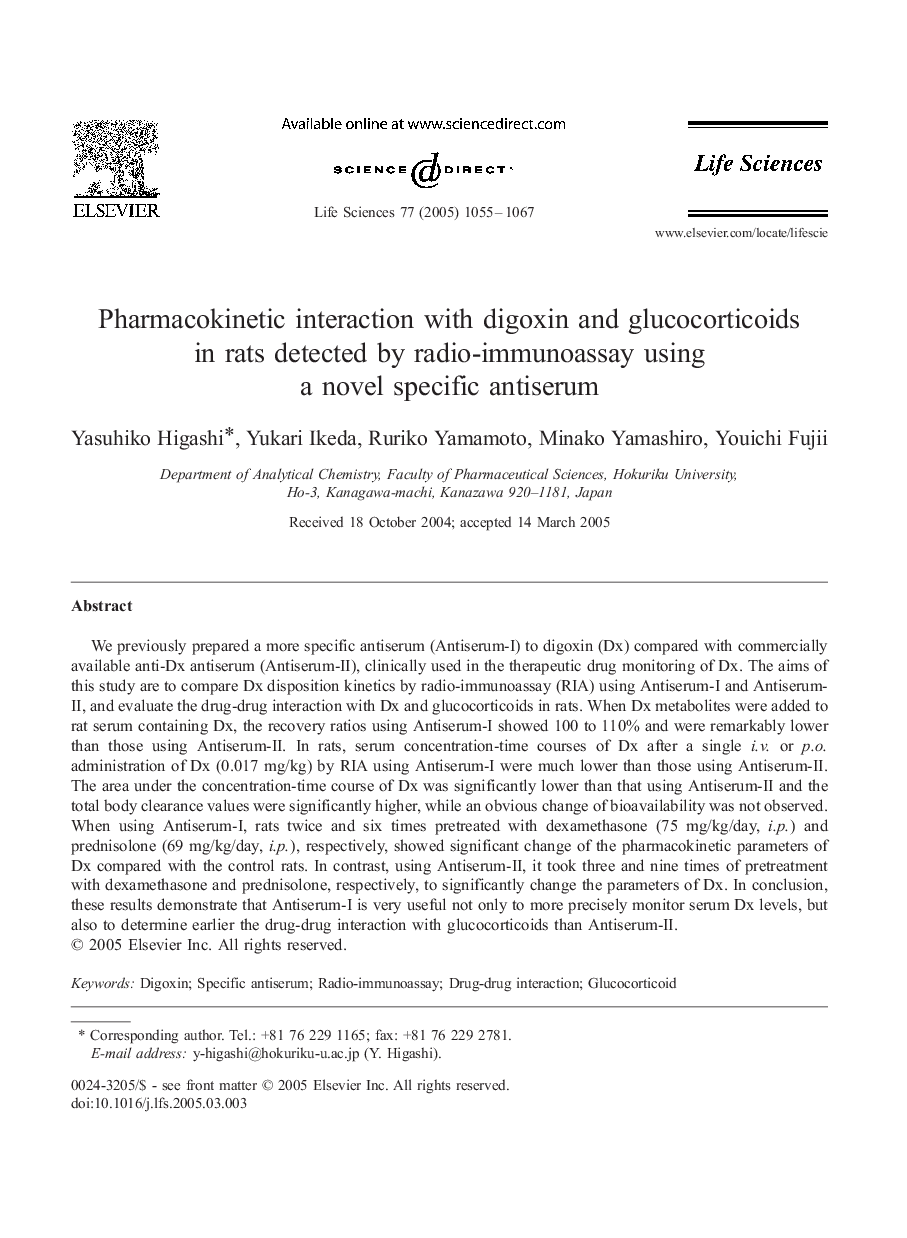| Article ID | Journal | Published Year | Pages | File Type |
|---|---|---|---|---|
| 9012692 | Life Sciences | 2005 | 13 Pages |
Abstract
We previously prepared a more specific antiserum (Antiserum-I) to digoxin (Dx) compared with commercially available anti-Dx antiserum (Antiserum-II), clinically used in the therapeutic drug monitoring of Dx. The aims of this study are to compare Dx disposition kinetics by radio-immunoassay (RIA) using Antiserum-I and Antiserum-II, and evaluate the drug-drug interaction with Dx and glucocorticoids in rats. When Dx metabolites were added to rat serum containing Dx, the recovery ratios using Antiserum-I showed 100 to 110% and were remarkably lower than those using Antiserum-II. In rats, serum concentration-time courses of Dx after a single i.v. or p.o. administration of Dx (0.017 mg/kg) by RIA using Antiserum-I were much lower than those using Antiserum-II. The area under the concentration-time course of Dx was significantly lower than that using Antiserum-II and the total body clearance values were significantly higher, while an obvious change of bioavailability was not observed. When using Antiserum-I, rats twice and six times pretreated with dexamethasone (75 mg/kg/day, i.p.) and prednisolone (69 mg/kg/day, i.p.), respectively, showed significant change of the pharmacokinetic parameters of Dx compared with the control rats. In contrast, using Antiserum-II, it took three and nine times of pretreatment with dexamethasone and prednisolone, respectively, to significantly change the parameters of Dx. In conclusion, these results demonstrate that Antiserum-I is very useful not only to more precisely monitor serum Dx levels, but also to determine earlier the drug-drug interaction with glucocorticoids than Antiserum-II.
Related Topics
Health Sciences
Medicine and Dentistry
Cardiology and Cardiovascular Medicine
Authors
Yasuhiko Higashi, Yukari Ikeda, Ruriko Yamamoto, Minako Yamashiro, Youichi Fujii,
